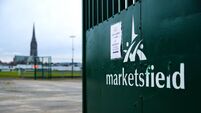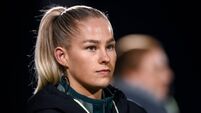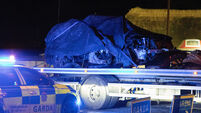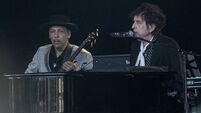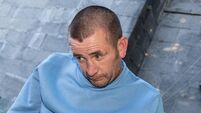Too small, too Cork - the rejection that fired up Roy Keane
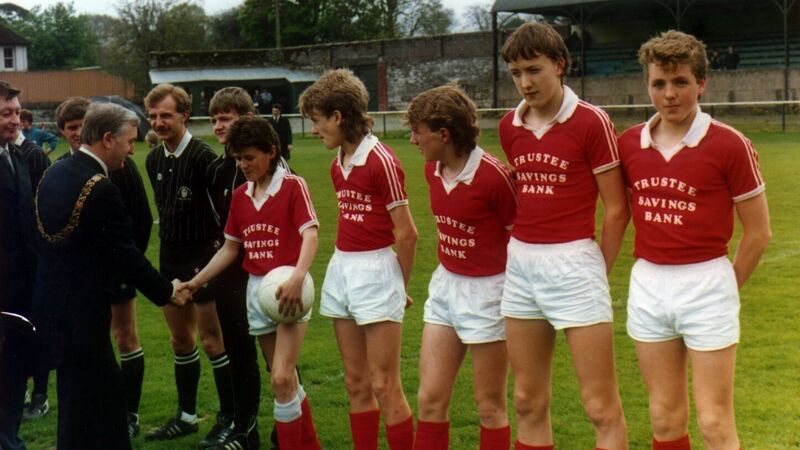
Cork Kennedy Cup captain Roy Keane meets the Lord Mayor Dan Wallace ahead of the Kennedy Cup final in Cork. Also in the picture are Len Downey and the late Paul McCarthy, both teammates of Roy's at Rockmount.
Focusing on the period between 1988 and 1993, ‘Keane: Origins’ charts the Corkman’s formative football years at home while examining his three seasons under Brian Clough at Nottingham Forest In the following extract, a teenage Keane experiences a litany of underage omissions with the Republic of Ireland, setting the tone for the tension that simmered much later on.
Dublin lets on to be a capital, Frank O’Connor once said. Keane had a difficult relationship with the place.
In 1982 , RTÉ’s agenda-setting television production, focused on Cork for a particularly memorable episode. At one point there was a light-hearted vox-pop segment, where a reporter took to the streets of Dublin and asked the locals how they felt about Cork.
‘I think they’re a nice race of people,’ one man warmly offered. There was never any malice intended. There was merely an assumption from Dubliners that anywhere outside of their cocooned existence was a kind of rural, agricultural wasteland with an array of madcap characters immersed in various kinds of buck-toothed buffoonery. Cork, the country’s second-biggest city and a place boasting huge historical influence, cultural resonance, a proud sense of identity and an acerbic wit, always took this worst. The ignorance, indifference and flippancy grated.
Keane was from Mayfield, at the heart of Cork city’s northside. He was in his early teens when his city was decimated, the heavyweights – Ford, Dunlop and Verolme – all shutting down their operations in the space of eighteen months from 1983 to 1984, deciding they didn’t need Cork any more. Thousands of fathers, including his own, were left to beg, borrow and barter for bits and bobs. When the country was gripped by recession in the late 1980s, it felt like Cork had already been battling it for a decade.
The city informed Keane, certainly. That runt of the litter mentality. They may not have had much, but what they had was special.
As it turned out, Dublin didn’t particularly like Keane very much either. In 1987 he’d lost to Belvedere, an intimidatingly well-run and highly acclaimed club from the northside of Dublin, in an Under–15 national final in miserable circumstances. After forcing a draw in the capital, his Rockmount team surrendered a two-goal lead and lost 3–2 in the replay back home, missing out on a first Evans Cup success in twenty-five years.
He was there too for Ireland Under–15 trials but was ultimately ignored, deemed too small by the selectors. His Rockmount teammates Paul McCarthy, Damian Martin, Len Downey and Alan O’Sullivan all made the grade, which irritated him further. It had always been a solid quintet, a group made famous by the Kennedy Cup photograph taken when all five represented Cork at the Under–14 national tournament in 1986.
Keane had captained that side to their first title in a decade as they annihilated an Offaly selection 10–1 on aggregate. Replete in their red and white, Downey is a towering presence on the far left of the picture. Second from right is McCarthy, already a powerful unit. Martin and O’Sullivan are a strong, commanding pair. All four have their shoulders back, chests out and hands clasped firmly behind their backs. A miniature Keane is dead centre, hands draped in front like he’s defending a free kick. His posture makes him seem even smaller, a world away from adolescence. Just a boy. But they were all in it together. Written off, abused, criticised. Only Rockmount. Still, the five of them got there. And the Ireland team was next.
But not for Keane. Yet.
At Rockmount, the coaches had famously called him ‘The Boilerman’. The guy who got things going. The playmaker. But there was another alias too, owing to just how diminutive he was.
‘His nickname was The Dot. A full stop, like,’ says Noel Spillane, the long-time soccer correspondent for Cork’s and newspapers, who covered Keane’s ascent in detail. ‘That’s what the lads would say during the games. “Give it to The Dot.” That’s what he was known as.’ Keane was aware of his physical shortcomings, but that was out of his hands. So he turned a laser-focus to things he could control: fitness, proficiency on the ball and a dedication to the game that seemed out of sync with the moodiness and restless energy of hormonal teenage years.
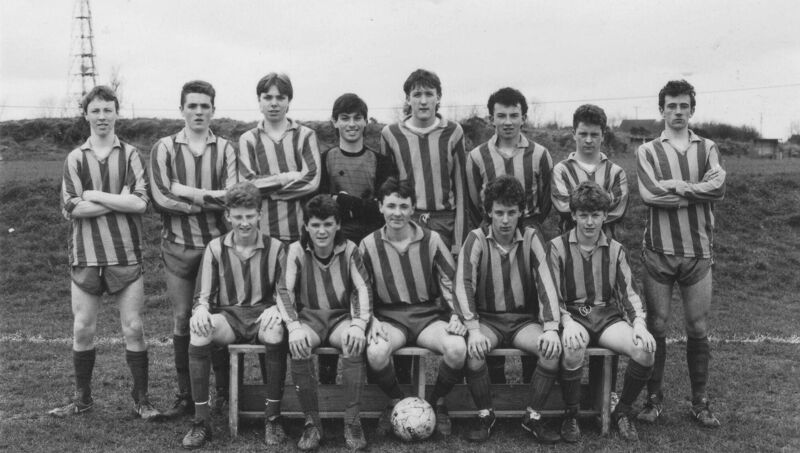
‘A few years after first playing against him for Home Farm, there was a week’s camp at The King’s Hospital in Dublin and Roy was part of the Cork group invited to attend,’ Tommy Dunne says. ‘There were two things that stand out. Roy won the award for most technical player in our age-group. And the other thing I remember was that we were a load of young lads away at a camp. The King’s Hospital had dormitories because it was an old Protestant college. We were there in the summertime and, with the exception of one person, everyone was always messing around. That person was Roy. And the reason? He was resting up because the next day was all about training. I’ll never forget it. I used to go into the dorm where the Cork lads were and he was just chilled out.’
Darren Barry was an underage teammate of Keane’s at Rockmount. ‘Gene O’Sullivan, the manager of Rockmount schoolboys for years, and who was a lovely man and who, sadly, didn’t get to see Roy make it, told me one time about him,’ he says. ‘It was the day of Roy’s Confirmation and Rockmount had training. But he still came down to train. He just loved playing that much.’
Keane did eventually get a call-up to the Irish Under–15 squad for a game against France at Bray’s Carlisle Grounds in June 1987. But he didn’t make the match-day squad, something he’d quickly get used to.
Still, there was a better experience in September, when Keane was named in the Under–16 panel. In a crucial draw with Northern Ireland, he earned an especially rave review and was subsequently included in Joe McGrath’s squad for the European Championships in Spain the following summer.
Keane was a spectator for the entire tournament. From the sixteen-man group, he was one of only two players, the other being the reserve goalkeeper, who saw zero game-time. Even in a brief newspaper report that offered an overview of how the Irish team had fared, he was literally an afterthought: ‘Also in the squad were Roy Keane (Rockmount) and John Connolly (Hillcrest).
Purdy remembers Keane’s disgust when McGrath was forced to make changes but still decided against using him. ‘It always sticks out in my memory,’ he says. ‘We had a few injuries after the second game against the Swiss, including myself, so there were some changes for the final fixture against Belgium. I saw Roy’s face in the dressing room when he knew he wasn’t involved and he was like a demon. I remember looking across at him. I knew by his demeanour that he was devastated at not getting a run. And that was our last game because we didn’t qualify for the next stage.’
Keane was badly burned and there’d be plenty of scar tissue. The entire experience – supposedly a proud achievement – was underwhelming.
By the start of the 1988/89 domestic season, it seemed everyone was moving on and stepping up. Alan O’Sullivan had signed for Luton Town and McCarthy was picked up by Brighton, along with Joe McGrath’s son, Derek. Selected for Maurice Setters’ Irish youth squad, Keane was now envious of those around him. David Collins was already appearing for Liverpool’s reserves. The likes of Kieran Toal (Manchester United), Jason Byrne (Huddersfield) and Paul Byrne (Oxford) were all cross-channel too.
The steady migration of his peers was harming Keane’s progress. In October 1988 the Cork Gaelic football team lost an All-Ireland final replay to Meath at Croke Park by a point. A few days later, Keane would feel a similar sense of bitterness.
‘At last, Cork people have something to smile about,’ went the GAA-inspired opening line of an report on the Ireland youths’ win over Iceland in their first European Championship qualifier.
But the reference wasn’t to Keane. It was to O’Sullivan, who scored twice in the space of four minutes at Dalymount Park. Keane had been named in the initial twenty-two-man squad but failed to even make the bench for the game.
When Setters later named an eighteen-man group for a winter tournament in Israel at the end of the year, McCarthy went, O’Sullivan went, Downey went. Keane was ignored completely.
It was embarrassing. It hadn’t been long since some glittering newspaper reports described how he’d ‘shone in midfield’ in the Under–16 Euro qualifier against Northern Ireland. Now, still stuck at Rockmount, he was being left behind.
There was a pattern. The perception seemed to be that he was good but not good enough. Turning the corner into 1989, there seemed a genuine chance that he could just slip through the net.
McCarthy, through his father, tried to engineer a trial for Keane at Brighton but, mysteriously, it never materialised as the same well-worn excuses were wheeled out.
‘The night before I was due to leave, Paul called to say the trial was off,’ Keane said years later.
McCarthy went into more detail when he appeared in the RTÉ documentary in 1997, which charted Keane’s rise.
‘He was meant to come over to Brighton – my dad set it up.’ McCarthy recalled. ‘But in the end the Irish scout put the Brighton manager off it because he questioned his temperament and his size. But his ability was unbelievable. He never gave the ball away. He scored a lot of goals. He was only tiny, but he’d never be knocked off the ball and if there was any trouble, he’d be there and would never back away from anything.’
Decades later, Harry Redknapp alleged a different version of the story. He detailed a second-hand yarn – passed on to him by a pal – of how then-Brighton manager Barry Lloyd had agreed to watch Keane play in an Ireland youth international upon a recommendation from an unnamed scout.
‘The scout went to see the [Ireland] schools manager and explained the situation – that this was Roy’s big break and he could become an apprentice at Brighton if they liked the look of him,’ Redknapp writes in
‘“He’s been in every squad but he hasn’t played a minute of any game,” he [the scout] said. “Can you make sure he’s involved on Tuesday?”
The coach said no. “We’re not here to showcase kids, we’re here to win football matches,” he said. Keane never played and Brighton didn’t take him."
The scout in question was Brian Brophy, who offers up a slightly different version of events.
‘The Under–16s had qualified for the European Championships and Barry [Lloyd] asked me to go over to Spain to have a look at Roy,’ Brophy says. ‘We had gone there purposely to watch him. And we were probably the only club out there. We approached Joe [McGrath] and asked him to put Roy on. And he said, “No, no. He’s not good enough.” And we said, “Look, we’ve come all this way.”
But, he never played. Roy and the sub goalkeeper, John Connolly, never got on the pitch.’ Brophy continues, ‘With regards to Paul McCarthy’s father arranging a trial, I didn’t know anything about it. So I wouldn’t have been in a position to tell Brighton, “No, don’t take him.” I don’t know if it was genuine or if somebody else had arranged it or what happened. But it certainly had nothing to do with me.’
According to Ted Streeter, Brighton’s youth officer and who was with Brophy in Bilbao, his motivation for going was to watch Derek McGrath and McCarthy, Brighton’s two recent acquisitions. ‘I hadn’t heard anything about Roy,’ he says. ‘Obviously with his boy having joined us, Joe [McGrath] was keeping an eye on some of the [Irish] lads. But he never mentioned Roy. He was quite small and Joe never recommended him. We thought Joe just didn’t fancy him and that’s why he didn’t play him. If I had seen him and fancied him, I would’ve made arrangements for Roy to come over. I don’t judge a player on their size and Derek [McGrath] was quite small. But there was no follow-up from me.’
Barry Lloyd shatters the myth a little. ‘I don’t think we were even close to bringing Roy over,’ he admits. ‘I was told he wasn’t the biggest and it’s a real difficult one for me. History says we missed out on him, but that’s the name of the game, isn’t it? And in some respects we were happy in our ways because we brought a few boys over from Ireland in that era.’
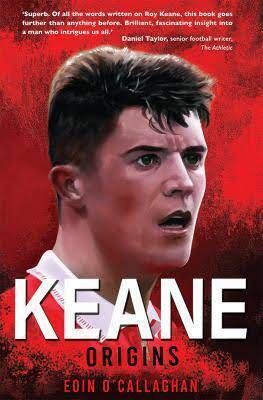
Those at Rockmount remained perplexed by Keane’s continued absence from the Irish team and his inability to land a trial with a cross-channel club.
‘It was bizarre that he wasn’t being picked up by English clubs because other players in Cork were,’ says Darren Barry, Keane’s midfield partner at Rockmount for three seasons. ‘He captained the Cork Under–14 Kennedy Cup team that destroyed Dublin in the semi-finals and then went on to win the national trophy. Therefore, they were the best team in the country and Roy was the skipper. Rockmount were one of the best teams in Ireland at the time too. So he was well known to everyone. Anybody who saw him play at that time would have said he could play professionally, without a doubt.
‘It would certainly have been discussed by players, parents and anyone who was watching that Roy wasn’t getting the rewards that his talents deserved. Regardless of his size, he was still outstanding. I remember in an Under–15 game, he scored a goal very similar to the one he got in Turin for Manchester United in the Champions League semi-final in 1999. He rose up above everyone and headed it across. You rarely saw that at schoolboy level – a player heading the ball like that and particularly somebody who wasn’t tall. It was purely based on timing and rising to meet the ball. He had no height advantage.’
But the local support mattered little, and by the summer Keane was despondent. The season had started with international involvement but that evaporated quickly.
When the Irish youth team beat Northern Ireland in a May friendly, O’Sullivan and McCarthy were both involved, but Keane, snubbed again, was back in Cork instead. A few days earlier, he and Downey featured in the Munster Youth Cup final for Rockmount at Turner’s Cross. They came from behind twice to draw 2–2 with Limerick City.
And, as the Irish underage group was beating Malta in a crucial Euro qualifier at Dalymount Park at the end of the month, Keane’s focus was on something a little lower-key. On the June Bank Holiday Monday, Rockmount traipsed down to the old Priory Park to face Limerick again. They lost in a dramatic penalty shoot-out.
Another season over, another year gone and Keane was right where he had started. The local team. Small time.




